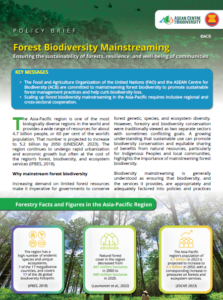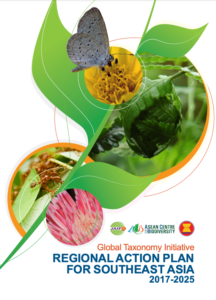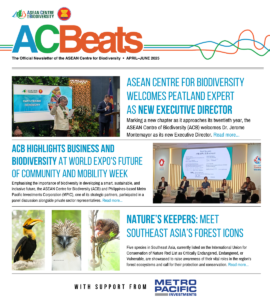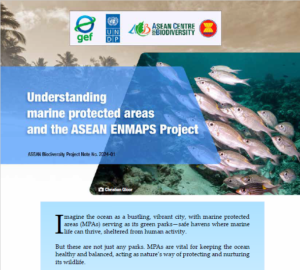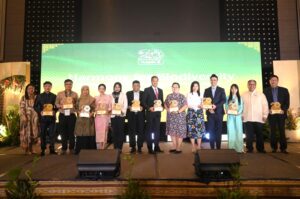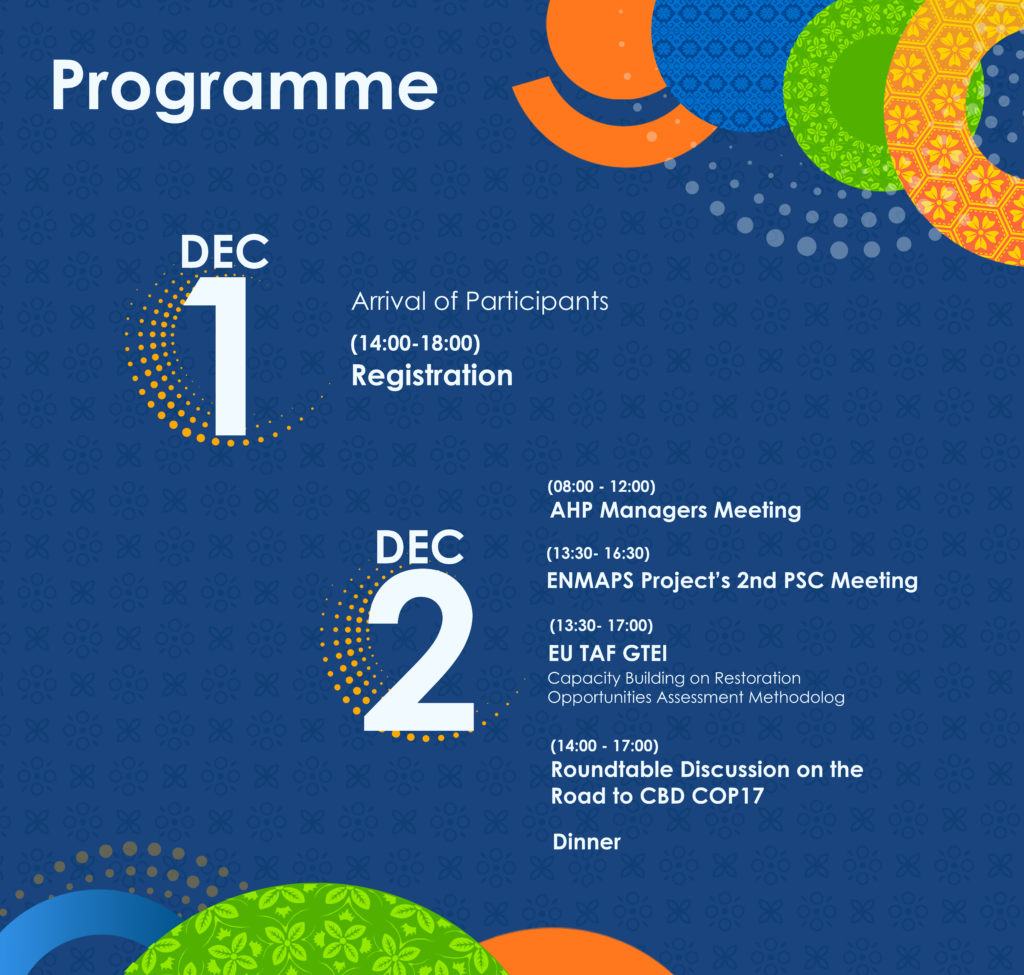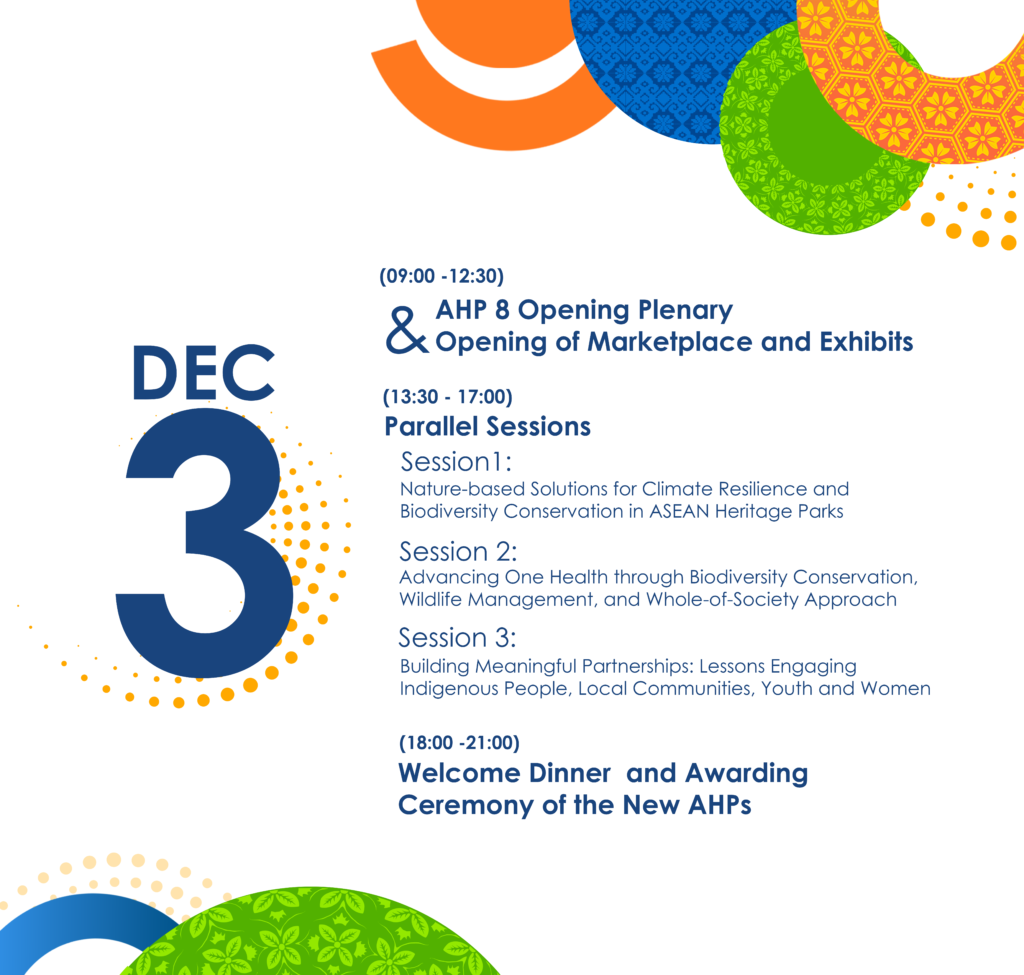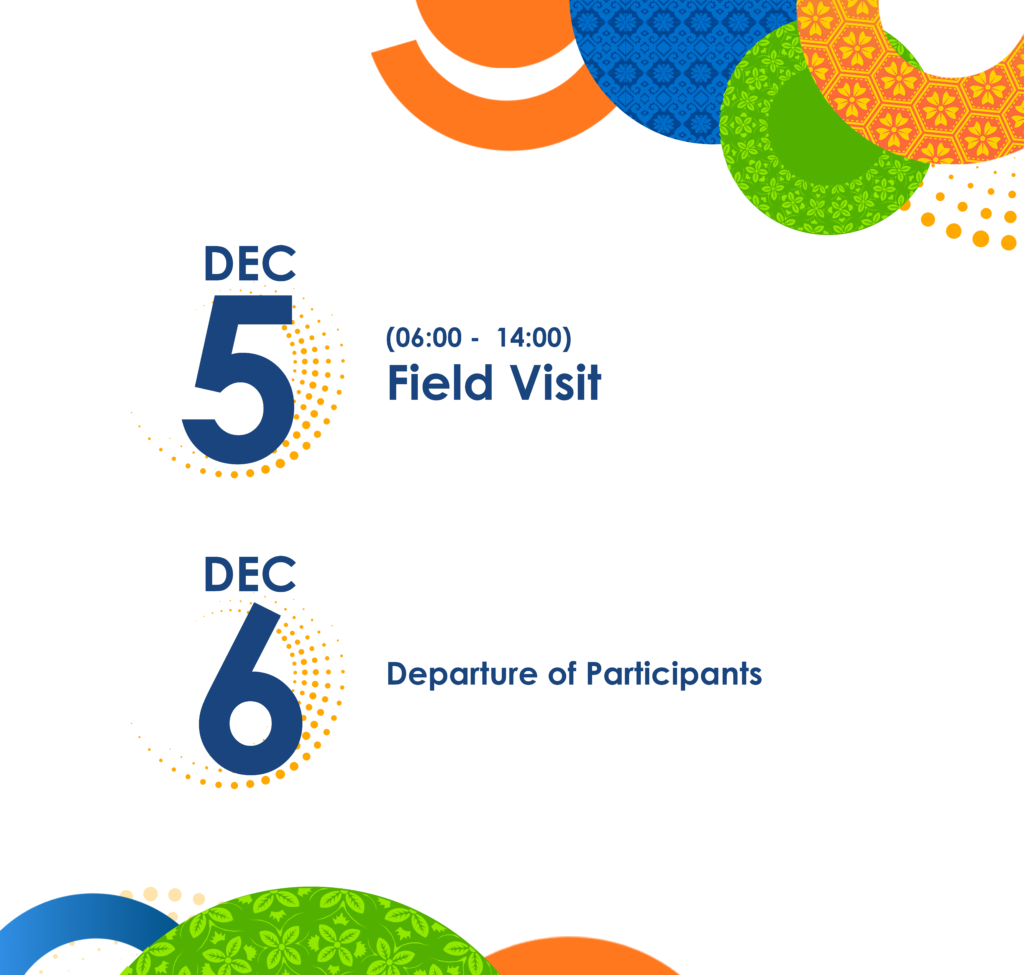Dr. Jerome L. Montemayor
Executive Director, ASEAN Centre for Biodiversity
Having literally immersed myself in wetlands exposed me to the beauty and value of our mangrove ecosystems. As we celebrate this year’s International Day for the Conservation of the Mangrove Ecosystems, we at the ASEAN Centre for Biodiversity (ACB) invite you to shift our focus to these valuable natural resources and extraordinary models of resilience.
According to the most recent estimates of the FAO in 2020, our region has the largest extent of mangroves globally. It is said that the ASEAN region is home to around 40 per cent of the world’s mangrove forests, where at least 47 of the 70 known mangrove species globally can be found in an estimated total area of 4.5 million hectares. Indonesia alone has about 24 per cent of the world’s mangroves. If Lao PDR were not a landlocked country, we would probably find mangrove ecosystems in every ASEAN nation.
This is both an asset and a responsibility for us in the ASEAN region. Mangrove ecosystems, often dubbed as “rainforests of the sea,” deliver invaluable services from which we benefit. Mangroves serve as breeding and feeding grounds for local terrestrial and aquatic species and act as “stopover sites” for migratory bird species. In addition, mangroves also contribute to ecological balance by stabilising and reducing sedimentation and siltation in coral reefs, while promoting land expansion through accumulated soil and debris.
Furthermore, especially amid the climate crisis and extreme weather events we are experiencing, mangroves act as frontline defenders, shielding communities from storm surges, high waves, storms, and tsunamis. The International Union for Conservation of Nature (IUCN) estimates that mangroves protect more than 15 million people and around USD 65 billion worth of properties annually from coastal disasters. Additionally, they function as vital high-capacity carbon sinks. It is estimated that mangroves can store 11 billion tonnes of carbon, thrice the amount stored by tropical forests of the same size. Mangroves also provide other social and economic benefits, such as food sources, supporting local livelihoods, and providing areas for rest and recreation.
Unfortunately, large mangrove areas have declined due to human activities and natural climate change-related events. In addition to their exposure to frequent and extreme weather events, studies also show that rising sea levels have become a primary threat to mangrove ecosystems. Without any action, one-fourth of the world’s mangrove area is expected to be submerged in the next 50 years. We are at the brink of seeing almost half of our mangrove ecosystems collapse, washing away all the benefits we enumerated earlier.
Considering all these and the urgent need for regional collective action, the Member States have adopted the ASEAN Strategy on Sustainable Mangrove Ecosystem Management in 2024. Presented by the Ministry of Environment and Forestry of Indonesia, in collaboration with the ASEAN Senior Officials on Forestry, this comprehensive strategic framework embodies a shared vision of enhancing the resilience and vitality of mangrove ecosystems across the ASEAN region. It adopts a holistic approach that integrates science, policy, community engagement, and international cooperation. In addition, the ASEAN Flyway Network and the ASEAN Mangrove Network have been established to promote regional collaboration in rehabilitating mangroves, wetlands, and other threatened natural resources in the region. They also serve as venues for sharing best practices and lessons learned in ecosystem restoration.
Aligned with these initiatives, the ACB, as a technical and scientific cooperation support centre for the implementation of the Kunming-Montreal Global Biodiversity Framework (KM GBF), actively works with the ASEAN Member States on mangrove conservation, specifically on achieving Target 2 and Target 3 of the KM GBF. Target 2 aims to ensure that by 2030, at least 30% of degraded ecosystems, including mangroves, are under effective restoration. Meanwhile, Target 3, “30×30” goal aims to protect at least 30% of the planet’s terrestrial, inland water, and coastal and marine areas by 2030. These goals call for establishing effectively conserved, ecologically represented, well-connected, and equitably governed systems of protected areas and other effective area-based conservation measures. The ASEAN Member States are expected to align their national strategies to achieve these benchmarks by integrating them into their respective National Biodiversity Strategies and Action Plans.
Several member states have also initiated mangrove ecosystem restoration and rehabilitation activities at the national level. For example, Indonesia, with 23% of the world’s mangrove area, is firmly committed to mangrove conservation and restoration. From 2019 to 2023, Indonesia, through several funding sources, rehabilitated around 70,000 hectares of mangrove forests, and from 2024 to 2025, they will rehabilitate a large-scale mangrove area of about 600,000 hectares. By 2018, Malaysia planted 6.62 million seedlings across 28.74 square kilometres through 13 coastal erosion prevention and rehabilitation initiatives. On the other hand, Viet Nam planted 19.68 square kilometres of protected coastal forests in 2015. As part of its National Greening Program, the Philippines mapped 500 square kilometres of mangroves and beach forests for development, planting, and enrichment. In addition, the Philippine Master Plan for Climate-Resilient Forest Development 2015-2028 is estimated to yield more than 300 million tonnes of net carbon benefits from avoided deforestation and new plantations of mangrove forests and watersheds. In Singapore, the National Parks Board collaborated with the OCBC Bank in establishing the OCBC Mangrove Park in Sungei Durian on Pulau Ubin. Expected to be finished by 2026, this marks Singapore’s first large-scale project utilising the Ecological Mangrove Restoration (EMR) technique, which aims to boost the long-term resilience of mangrove ecosystems and enhance Singapore’s carbon storage capacity. The park’s 9,000 mangrove trees are projected to potentially absorb up to 30 million kilograms of carbon dioxide over their lifetime. Other member states have also initiated their own policy frameworks and innovative approaches to support mangrove conservation and restoration.
As we celebrate this year’s International Day for the Conservation of Mangrove Ecosystems, we emphasise how these natural resources also serve as nature-based solutions to the challenges caused by climate change. We reaffirm our call, especially to communities surrounding mangrove ecosystems, to continue science-based restoration efforts and ensure they align with our global goals and regional priorities. As we organise or participate in these initiatives, let us be mindful that we are planting the suitable mangrove species in the correct zones to ensure not just their survival but also the overall health of the ecosystem. The initiative should extend beyond planting day, as we need to commit to ensuring that the mangrove seedlings planted will survive and grow to maturity. Through these, combined with our unwavering commitment, we can secure a resilient and sustainable future for all.
Join us as we continue to be in the groove for mangrove conservation!


